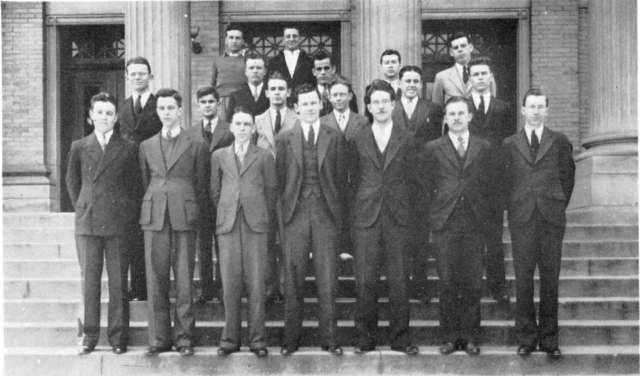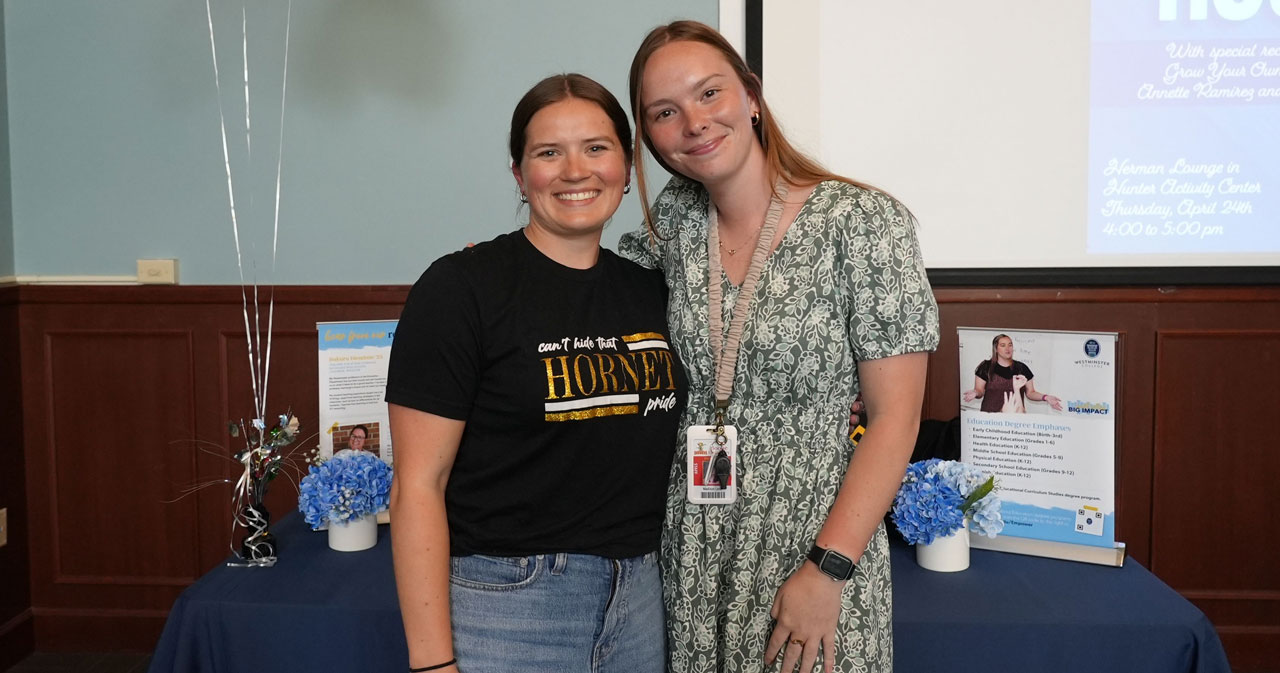Town Club members:1935
When Westminster entered the 1930s, approximately 55 percent of the student body belonged to a fraternity. While some of the Independents were able to live in the dormitory Reunion Hall, many other students had to make other housing arrangements. Some lived in local homes and boarding houses, and some lived out of town. A few became dormitory counselors at the nearby Missouri School for the Deaf.
Yet none of these students had a centralized location on campus that they could call “home” or a unified means of participating in social, athletic, or political activities on campus. Thus, in 1931, 65 Westminster men established the Town Club and got the permission of the College to use a room in the basement of the administration building as their club room and meeting place. Director of Athletics and Basketball Coach Gene Kimbrell ‘20, a member of Kappa Alpha, was instrumental in getting the new club formed. 
As the organizers stated: “The founding of the Town Club, it is hoped, will mark the beginning of a new order of things on campus, by making it possible as never before for every student to take part in a social activity and to be a member of an organized group. … It is thought that the Town Club, by getting each student to take an interest in the activities, and by giving him friendships and social contacts that he might otherwise not have, will make his life in college more enjoyable and more profitable.”
The first social function for the Town Club was a spring dance at the Fulton Country Club. The Royal Blues Band provided the music. Meetings of the club and its activities were well attended, and the club grew stronger.
Then, in October of 1933, the club reorganized under the name “The Barbarians,” an anomaly the yearbook attributes to “an overemphasis on early European history classes.” However, the name probably seemed very appropriate for the time, because the group had greatly expanded its power, and its members held practically every major student office on campus including President of the Student Body. The Barbarians seemed invincible.
The other change in the organization which took place was its members were no longer just any unaffiliated men. Definite requirements were established for membership.
By October 1935, the fad of being “The Barbarians” had faded, and the group returned to its original name of the Town Club. The members moved their meeting place, renting the rooms downtown which were formerly occupied by the Elks Club of Fulton. The large game rooms and spacious parlors provided quite an upgraded recreational center for the club. 
In September 1948, the Town Club moved into Barrack No. 1 on campus. Realizing they were more centralized than ever and no longer could be described as “Townies,” in February 1949, the Town Club evolved into the full-fledged fraternity, Delta Alpha Phi. While the group no longer dominated leadership positions on campus, they boasted an “international air,” having students from all over the United States as well as France and China as members. Their major social events included a Halloween Party, Christmas formal, and spring formal. 
In 1950, Delta Alpha Phi actually moved into its own fraternity house at 321 W. Seventh Street, but its life was short lived. Over the next two years, two new fraternities came to campus, student enrollment declined, and the competition for pledges became fiercer. The reorganization of the old Panhellenic Association into the new Interfraternity Council and all these changes brought an end to Delta Alpha Phi by 1952 as well as social organizations the Kingsmen and House of Scots. The Town Club was just another fond memory of Westeryears.








You must be logged in to post a comment.